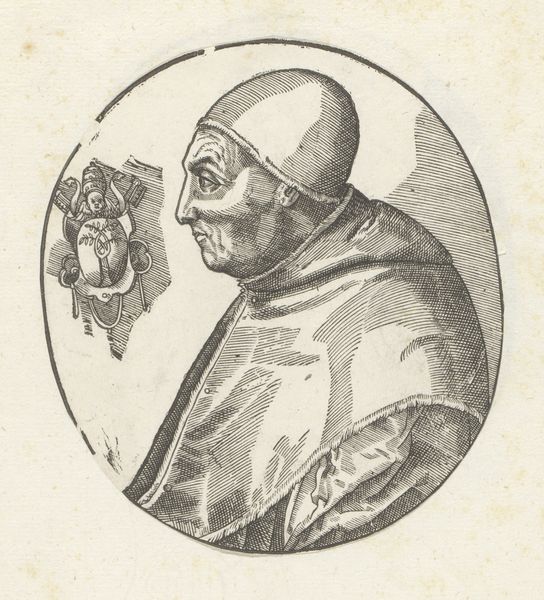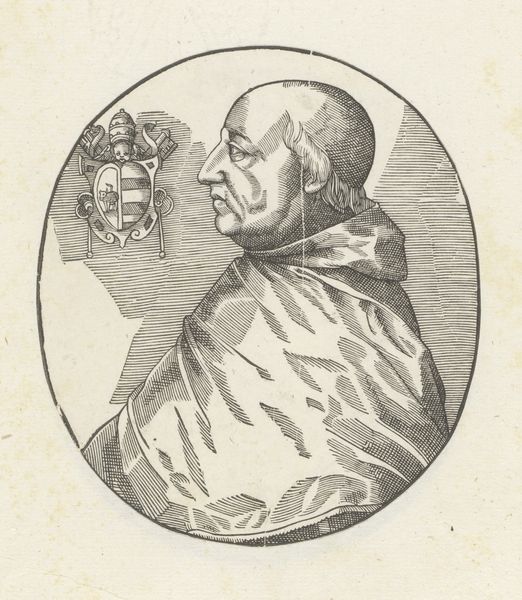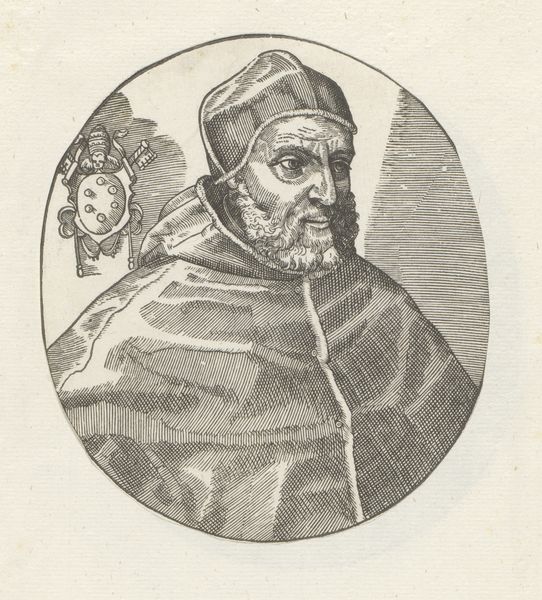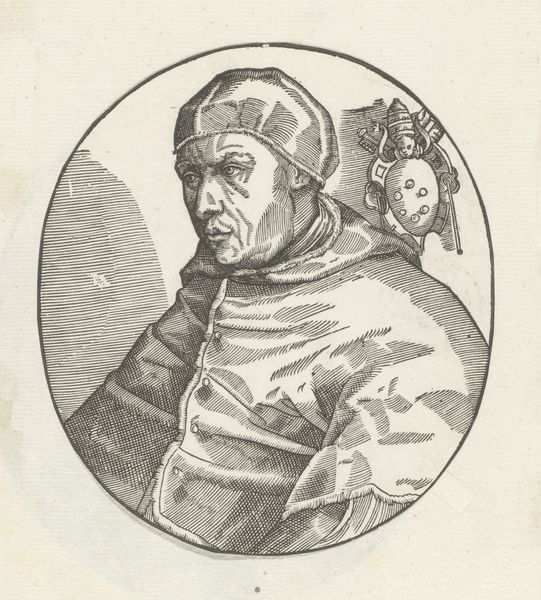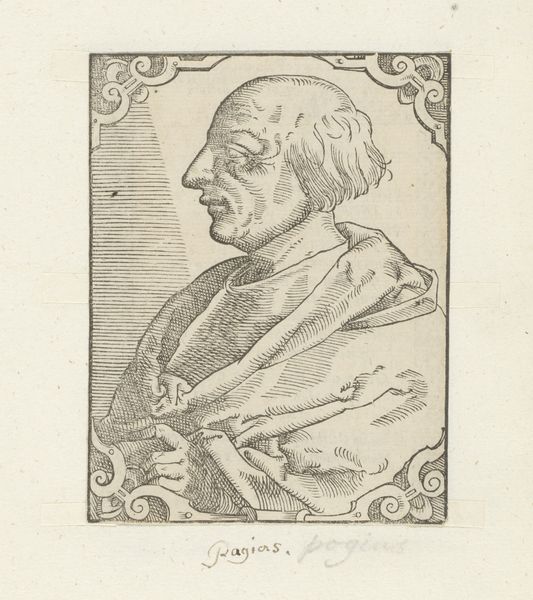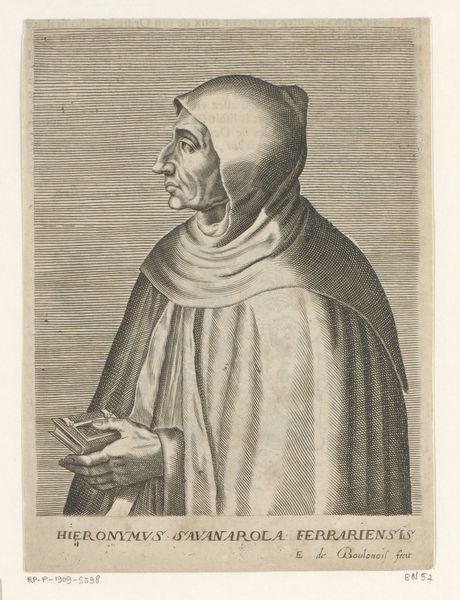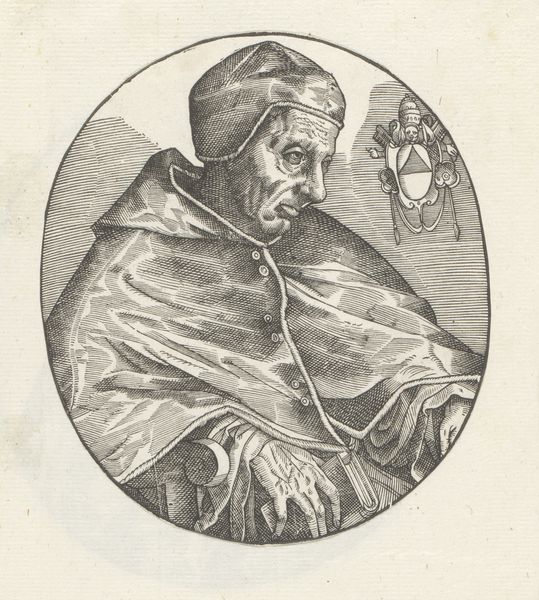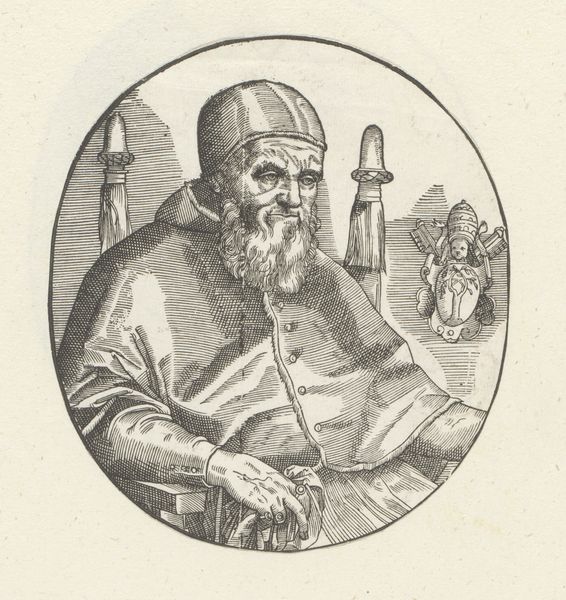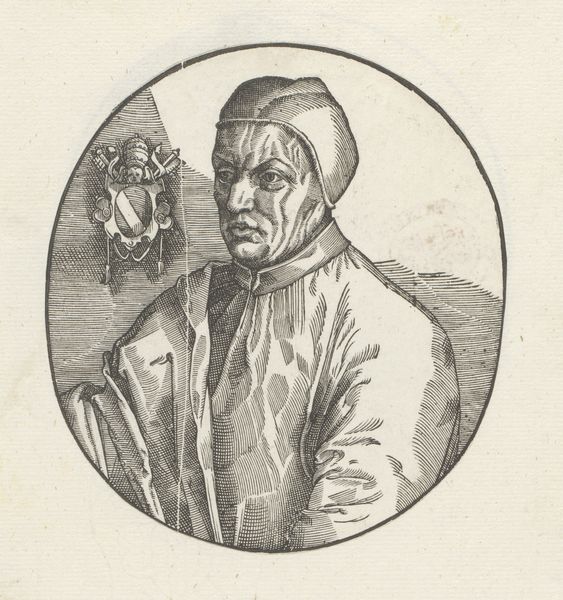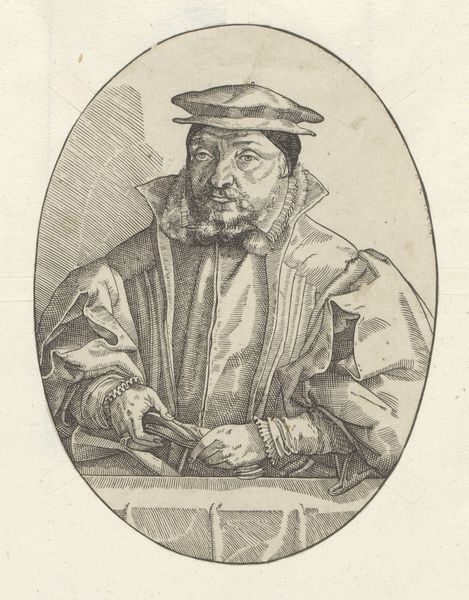
#
pencil drawn
#
toned paper
#
light pencil work
#
pencil sketch
#
old engraving style
#
personal sketchbook
#
pen-ink sketch
#
sketchbook drawing
#
pencil work
#
sketchbook art
Dimensions: height 126 mm, width 112 mm
Copyright: Rijks Museum: Open Domain
Curator: This is a portrait of Pope Martin V. Though the artist is anonymous, we believe this drawing was made sometime between 1549 and 1573. Editor: The starkness of the line work immediately catches my attention. It's so economical, yet it conveys a real sense of weight and presence. Curator: Absolutely. Look closely, and you can see the labor-intensive nature of the engraving process. Every line meticulously carved to create tone and texture. The medium itself lends a sense of formality befitting the subject’s high status. Editor: And the way his status is visualized is equally interesting. Notice the papal coat of arms beside him; symbols meant to be understood by the public. This work functions as both an image and a statement of power. How do you think copies of prints like these would have been disseminated, shaping opinions about the papacy at the time? Curator: It's difficult to determine. Prints were fairly portable in the 16th century. We know workshops had to be adept at catering to different markets, producing portraits like these en masse or modifying imagery depending on local sociopolitical demands. The subtle variations between surviving impressions must contain invaluable information regarding such processes. Editor: I am really struck by how the artist, even anonymously, negotiated representation and power. You get this clear sense of the Church hierarchy. Yet the character rendered by the anonymous engraver seems both detached and incredibly thoughtful, regardless of any political power that might be symbolized or actually manifested through Martin V's governance. Curator: The engraver probably never had an audience with Pope Martin, meaning they likely translated their rendering from yet another artwork. Each subsequent intervention in the process represents a layer of influence: sociopolitical, religious, economic... and thus affects meaning, even today. Editor: Precisely! It truly makes one contemplate what role each artist, known or not, plays in these long lines of labor that affect social representation, and how the papacy wanted to visualize their office. Curator: The survival of an anonymous engraving allows the recovery of some of these histories—it shows us that production is often complex. Editor: An insightful commentary on art and history indeed!
Comments
No comments
Be the first to comment and join the conversation on the ultimate creative platform.
